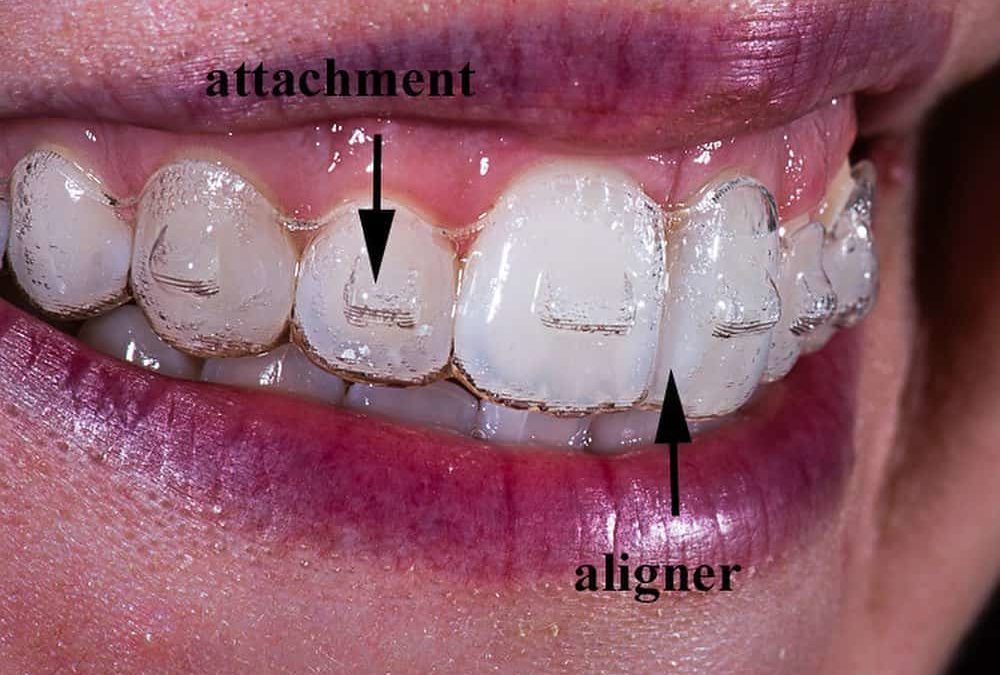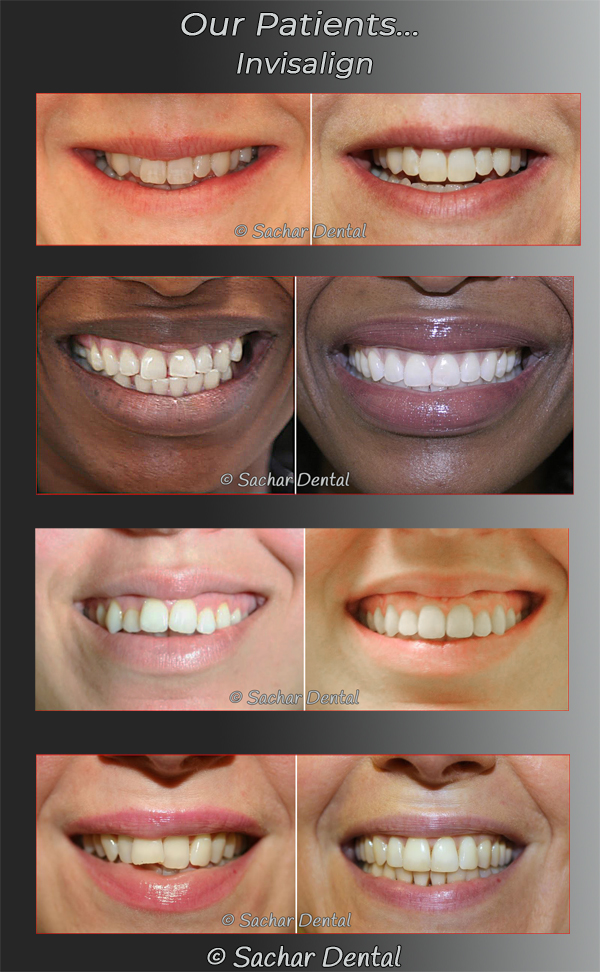Invisalign for Teenagers: A Modern Solution to Straightening Young Smiles
Invisalign for Teenagers: A Modern Solution to Straightening Young Smiles
Blog Article
Invisalign vs. Traditional Dental braces: Which Alternative Is Right for You?
When taking into consideration orthodontic treatment, the option between Invisalign and conventional braces presents several essential factors that merit mindful evaluation. Invisalign uses a very discreet option with detachable aligners, while typical braces provide an extra visible yet reliable option for severe imbalance. Each alternative includes unique advantages and downsides associated to aesthetics, comfort, therapy period, and cost. Understanding these subtleties is vital for making an informed decision that lines up with your individual preferences and way of life. The concern remains: which option will ideal satisfy your orthodontic requirements and expectations?
Overview of Therapy Alternatives

In comparison, typical braces consist of steel braces and wires that are bound to the teeth. This approach applies constant pressure with time to attain alignment. While reliable for complex orthodontic problems, standard dental braces need normal gos to for adjustments and can position difficulties in preserving dental health as a result of the trouble of cleansing about braces and wires.
Both choices have their qualities, and the choice typically pivots on particular dental problems, way of life preferences, and client conformity. Inevitably, speaking with an orthodontic specialist is critical for identifying one of the most appropriate therapy plan customized to individual demands. Recognizing the nuances of each choice can dramatically influence the general success of orthodontic therapy.
Aesthetic Considerations
A substantial aspect influencing the choice between Invisalign and conventional braces is the aesthetic charm each therapy provides. Invisalign aligners are crafted from clear plastic, making them practically unseen when used.
On the other hand, standard dental braces include steel brackets and cables, which can be extra visible. While improvements in orthodontic technology have actually brought about the growth of smaller sized braces and tinted elastics, traditional dental braces still keep a more noticeable profile. For some people, the visibility of braces may hinder them from seeking needed treatment.
Eventually, the choice in between Invisalign and conventional dental braces may depend upon individual preferences relating to aesthetics. People that prioritize discretion frequently lean toward Invisalign, while those that are less worried concerning visibility may select conventional braces. Comprehending the visual effects of each option is important for making an educated choice that straightens with one's way of living and preferences.
Comfort and Convenience

In terms of benefit, Invisalign aligners are removable, making it possible for individuals to enjoy their preferred foods without limitation and keep optimal oral health. Cleaning and flossing are streamlined, as the aligners can be secured during these routines, whereas typical dental braces require careful maneuvering around cords and braces.
Furthermore, Invisalign's dynamic system enables for less orthodontic sees. Patients typically get numerous sets of aligners at when, which can simplify the treatment process and reduce time invested in the orthodontist's chair. On the other hand, typical braces demand normal changes, making them much less practical for those with hectic timetables. Invisalign. In general, the comfort and benefit of Invisalign make it an appealing selection for many individuals seeking orthodontic therapy.
Therapy Duration and Efficiency
While both Invisalign and typical braces are efficient in dealing with oral imbalances, the duration of treatment can vary substantially between the 2 options. Typically, Invisalign treatment can take anywhere from 12 to 18 months, depending upon the complexity of the instance. additional resources The clear aligners work by slowly shifting teeth into their wanted settings, and normal follow-ups with an orthodontist help make sure development continues to be on course.
In contrast, standard dental braces frequently require a longer dedication, typically ranging from 18 months to 3 years. This is due to their set nature and using brackets and cords, which can be more reliable for severe imbalances and complex instances (Invisalign). The treatment performance of typical dental braces is well-documented, as they enable for accurate modifications and greater control over tooth movement
Eventually, the option between Invisalign and traditional dental braces may depend upon both the anticipated therapy duration and the certain oral issues handy. Consulting with an orthodontist is vital, as they can supply tailored recommendations based on specific needs, making certain the selected method straightens with wanted end results and durations.
Cost Comparison and Insurance Policy Alternatives
Cost plays a substantial role in the decision-making process for people thinking about orthodontic treatment, whether going with Invisalign or traditional dental braces. On average, the cost of Invisalign varieties from $3,000 to $8,000, while typical dental braces usually set you back between $2,000 and $6,000. Aspects influencing these costs include the intricacy of the case, the period of therapy, and geographical area.
Numerous dental insurance coverage strategies provide partial insurance coverage for orthodontic treatments, yet the specifics can vary widely. Generally, traditional dental braces may be extra regularly covered by insurance strategies contrasted to Invisalign, which some insurance companies her explanation classify as a cosmetic treatment.
Additionally, a number of orthodontic methods offer adaptable layaway plan, making both therapy choices more accessible. Individuals must ask about potential funding options and price cuts for ahead of time payments. Examining the total price, including insurance coverage benefits and layaway plan, is important for making an informed choice that lines up with both aesthetic preferences and budget factors to consider.

Verdict
In recap, the option in between Invisalign and conventional dental braces depends upon multiple aspects, consisting of visual choices, convenience, treatment duration, and cost. Invisalign supplies a discreet, removable option that facilitates dental hygiene and nutritional flexibility, while traditional dental braces might be preferable for complicated dental issues and commonly come with a lower cost factor. Ultimately, consultation with an orthodontist is vital to examine private conditions and establish one of the most appropriate treatment option for accomplishing ideal oral placement.
When considering orthodontic treatment, the selection between Invisalign and typical braces provides a number of vital aspects that warrant cautious analysis.Comparing Invisalign and standard dental braces exposes unique therapy options for orthodontic improvement.While both Invisalign and standard braces are effective in correcting dental hop over to these guys imbalances, the duration of treatment can vary significantly in between the two options.Cost plays a substantial duty in the decision-making procedure for individuals taking into consideration orthodontic treatment, whether choosing for Invisalign or conventional dental braces.In recap, the selection between Invisalign and traditional braces pivots on multiple variables, consisting of visual preferences, convenience, treatment period, and cost.
Report this page